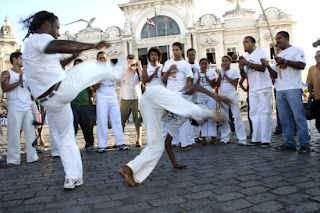Do you remember how recently I mentioned not watching your hands on the ground?
juji-gatame is one of the effects, it really is as horrible as trivial.
ok, due to great use of juji-gatame, I will describe the general principle this lever (this is really a lot of situations : p)
1.Grasp the wrist so that your thumbs are facing upward-facing you (really important if you grab the other side, thumbs in the direction of the opponent's shoulder-he'll easily free up his hand) and 'pull out' it on our site
2.We put first leg next to his neck, another on the other side of his hand so that she found herself between the legs. (by adding a second leg now we fall to the ground)
3.If we are far away from the opponent's chest you can bring up using your legs, braid legs and raise the hips up / bend in the back, all the while pressing the top of his hand to your chest
 | |
| (my ugly pic one more time) |
****
If you are too far away from the opponent's chest, rather you crush yours balls than do this lock
If you are too far away from the opponent's chest, rather you crush yours balls than do this lock
'flying' juji-gatame
damn how to escape?
really easy:if you are strong: grab a second hand that on which will be expected to lock and do not let it straighten
if you're not strong: move one leg so that the opponent could not straighten them
really easy:if you are strong: grab a second hand that on which will be expected to lock and do not let it straighten
if you're not strong: move one leg so that the opponent could not straighten them
great movie though, unfortunately, is in Japanese: /









